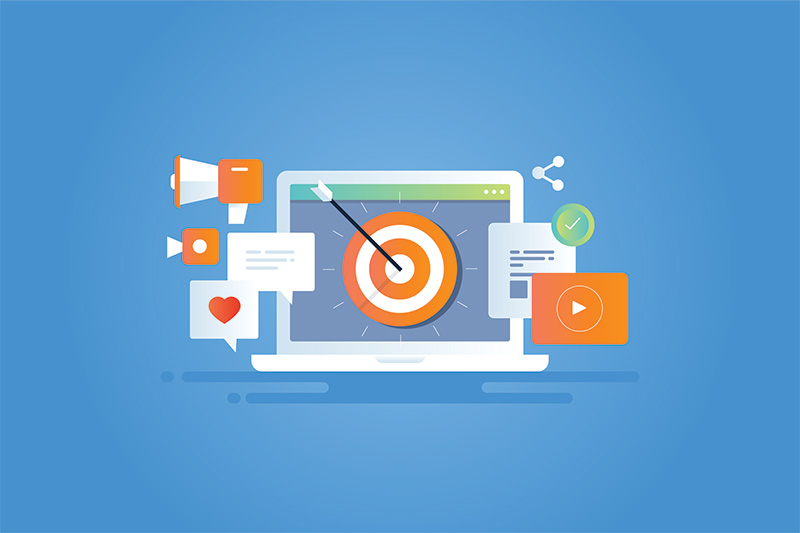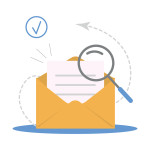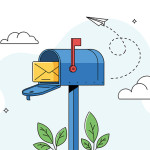Email Marketing 101: Mastering Engagement
Email marketing is a powerful tool for several businesses. They can connect with their audience, encourage engagement, and drive sales. To make the most of this strategy, you need to understand the elements of an email that drive success.
In this Email Marketing 101 guide, Darwill covers key aspects of effective emails. We explore how to create engaging subject lines and how to use compelling calls to action (CTAs). We will explain content length and proper send times and cadence.
Crafting Engaging Subject Lines
Your email subject line is the first thing your recipients see. This is why it is so crucial to create an engaging, attention-grabbing line. A compelling subject line can impact your email's open rate.
Here are some tips for creating compelling subject lines:
- Be concise. Keep it short and sweet. Aim for subject lines under 50 characters. This ensures that they're visible on mobile devices and not cut off in the recipient's inbox.
- Personalization. Use your subscriber's name or other personal data to make the email more tailored to their needs.
- Create urgency or curiosity. Incorporate elements that pique interest or inspire a sense of urgency. For example, "Last Chance: Expires Today!"
- Avoid spam triggers. Stay clear of excessive capitalization, exclamation points, or spammy words. These could land your email in the recipient's spam folder. If a subject line looks questionable, the recipient will be less inclined to open it.
The Importance of CTAs
CTAs are essential to your email marketing strategy. They guide your recipients on what action to take next. The CTA should encourage them to engage with your brand. They could push them to buy a product on your website, send them to a contact form, or learn more about your company. Whatever action you want them to take, a CTA will guide them there. If you do not have a CTA, you risk losing that engagement and possible sale or conversion.
Here's how to use CTAs:
- Make them clear and action-oriented. Use verbs that prompt the email recipient to act, such as "Shop now," "Learn more," or "Subscribe today."
- Use contrasting colors. Your CTA button should stand out from the rest of the email to draw attention.
- Be strategic with placement. Position your CTAs towards the top and at the end of the email so readers can find them.
- Test different CTAs. A/B testing can help you discover which CTA phrases and designs resonate best with your audience. You can track the number of clicks for each CTA and optimize for future campaigns.
Why Email Content Length Matters
The length of your email content can impact engagement. The right length depends on your audience and the nature of your message. Lengthy emails tend to cram too much information into a single message. This can lead to information overload. Putting too much content in an email can distract from your core message.
Another factor to consider for content length is how the email displays on mobile. Many people check their emails on their phones. Long emails can mean excessive scrolling. This can cause a frustrating user experience and may lead them to abandon your email.
Here are some guidelines to consider for content length:
- Be concise. In general, people prefer emails that get to the point. Keep your content concise and scannable, using bullet points and headers to break up the text.
- Diversify the content. Using different types of content in an email is a great way to engage your audience and convey your message. For example, you can incorporate text, images, videos, infographics, and blog links.
- Segment your audience. You should tailor your content length to different segments of your audience. For example, informational content might be longer for subscribers seeking in-depth knowledge. Promotional emails should be more concise.
- Test and analyze. As with most marketing strategies, testing and analyzing are essential. It provides greater insight into the content length that performs best. Track your email engagement metrics. This can help you to find the best length for your specific audiences.
Optimal Cadence and Send Times
Sending emails at the right cadence and time can impact your open and click-through rates. When you send emails at a time when your audience is most active and receptive, you're more likely to catch their attention. This encourages them to engage with your content.
Additionally, you will want to determine how often you send emails. Does your audience prefer receiving your emails several times a day, once a week, or once a month? Sending too many emails in a short period can overwhelm your subscribers. This can lead to increased unsubscribe rates. Sending too few emails may cause your brand to fade from their memory. Finding the right cadence ensures you stay on your subscribers' radar without overwhelming them.
Consider these factors when planning your email schedule:
- Segment your list. Different subscriber groups may have different responses to various sending frequencies. Analyze your data to identify optimal cadences for each group.
- Give them the option to select a preference. When an individual signs up for your email subscription, allow them to choose how often they want to receive your emails. Allowing subscribers to set their email frequency shows that you value their preferences and respect their time. It's a customer-centric approach that can enhance their experience with your brand.
- Test send times. Try sending emails at various times and days. This can help to determine when your audience is most responsive. Tuesdays and Thursdays are strong choices, but times and days can vary by industry and target audience.
- Avoid overloading. As mentioned above, remember not to overwhelm your subscribers with too many emails. It's a delicate balance between staying top of mind and becoming a nuisance. Keep in mind you aren't the only email they are receiving on any given day.
Maximize Email Engagement with Darwill's Expertise
Email marketing is an effective way to engage your audience. But the truth is that success lies in mastering the basics. Let Darwill help you craft the perfect emails for your business. We can create engaging subject lines and compelling CTAs. We optimize content length and schedule emails to hit at the right time. Improve email engagement and boost conversions with Darwill.



